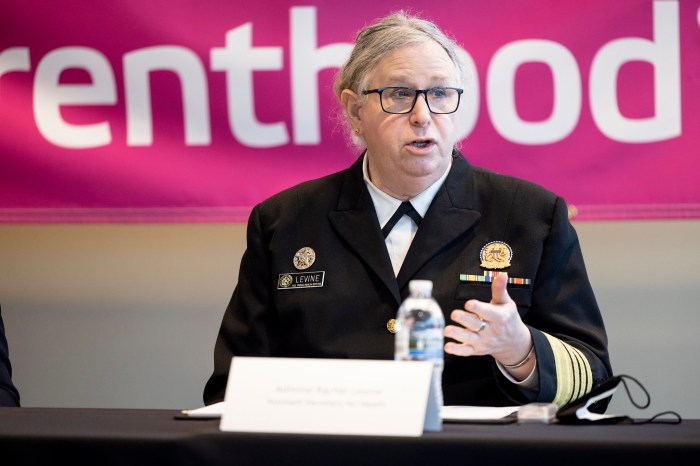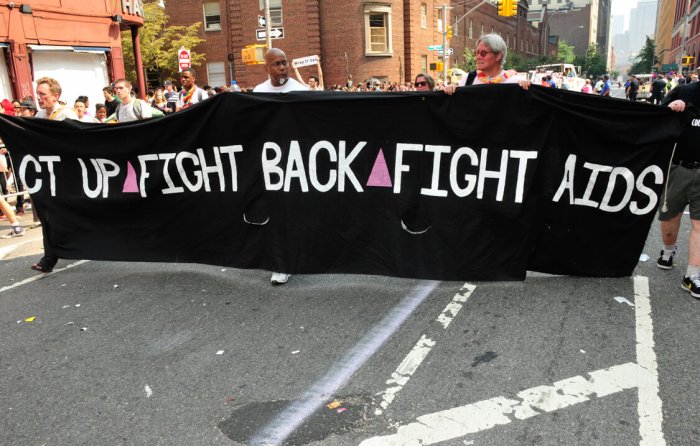When Mayor Michael Bloomberg released his proposed budget for New York City’s 2013 fiscal year, he said it was “an on-time balanced budget that reflects our values and our priorities.”
Guess who isn’t a priority?
“The budget we’re submitting won’t impose any new taxes on New Yorkers,” the mayor said on May 3. “It maintains the strength of the NYPD and also increases support for our public schools.”
The $68.7 billion budget continues cuts to services for people with AIDS and for HIV prevention efforts at a time when the city’s Department of Health and Mental Hygiene (DOHMH) is reporting increases in new HIV infections among young gay men, with young African-American men impacted most severely.
The proposed budget for the 2013 fiscal year, which begins on July 1, eliminates $27.6 million from the DOHMH disease control and epidemiology programs.
Specific HIV prevention cuts include eliminating six positions in the DOHMH sexually transmitted disease unit, ten positions in its “comprehensive HIV prevention programs,” and nine jobs in its “enhanced comprehensive HIV prevention planning” unit. All of the proposed job cuts are full-time positions.
“This is troubling indeed, especially in light of spikes in new infections for other [sexually transmitted infections], syphilis, in particular,” Tokes Osubu, executive director of Gay Men of African Descent (GMAD), wrote in an email. Sexually transmitted diseases make HIV easier to transmit or acquire.
DOHMH advocates for widespread HIV testing and getting those who test positive for the AIDS virus into treatment as the best response to AIDS. The theory, which is supported by some evidence, is that people who test positive will alter their behavior to not infect others and that those in treatment are less infectious, so even if they have unsafe sex, they are less likely to infect others.
In the proposed budget, DOHMH is cutting a half million dollars from its HIV testing efforts and eliminating two positions in a program that links HIV positive people to treatment.
“As a result of citywide budget reductions, the health department reduced funding efforts by six percent for FY13,” the DOHMH said in a statement. “Federal grant dollars have offset reductions in some programs, including HIV, and by streamlining and eliminating duplication; we continue to prioritize activities with the potential to reach the greatest number of affected and high-risk individuals and populations.”
The Bloomberg administration said that it has been responsibly handling large budget gaps in recent years and expected gaps ranging from $3 billion to $3.7 billion in the three fiscal years after 2013. The proposed cuts were not new, but were made in the middle of the current fiscal year and carried over to 2013, City Hall said in a statement.
The city’s HIV/ AIDS Services Administration (HASA), which helps people with AIDS obtain housing, Medicaid, and other benefits, had at least $8.5 million in combined cuts to its services and a housing program. An email circulated among advocates by Jaron Benjamin, a staffer at Voices of Community Activists & Leaders (VOCAL), put the HASA cuts at $12.5 million.
“Funded at more than $400 million, an increase of 40 percent since Mayor Bloomberg took office, our proposed cuts to HASA amount to two percent of its total budget with no adverse impact on our clients,” HASA said in a statement. “[The agency] is proud that its HASA program provides greater care and support to its 32,000 clients with clinical symptomatic HIV or AIDS than any other program in any other city in the country.”
One issue confronting gay and AIDS groups is that the member items from City Council members were zeroed out by the Bloomberg administration. Those groups have come to rely on member items to replace funds eliminated by the mayor.
“The biggest challenge for the HIV community is that none of the City Council restorations are included in the mayor’s budget,” said Matthew Lesieur, the director of public policy at VillageCare. “Once the Council takes a leadership role in the process… it is forever in their pocketbook. My concern is is that sustainable?”
As a funding source, the Council is not necessarily reliable because there is competition among constituents for that cash and when members leave the Council, groups may lose a friend there.
This past December, nine AIDS groups, the Council, and the DOHMH fought over cuts to HIV prevention contracts. During the dispute, Thomas Farley, the city’s health commissioner, told one AIDS group in a letter that HIV prevention funds were cut by $19 million in the prior five years, with his department eliminating $8 million and the City Council cutting $11 million.
The city’s Department of Youth & Community Development (DYCD) funds some beds at the Ali Forney Center, a shelter provider for homeless lesbian, gay, bisexual, and transgender youth. Some of that cash was provided by $18.3 million in Council funds, allocated to a number of programs. Lew Fidler, a Brooklyn councilman who is vying for a vacant State Senate seat, has been a fierce advocate for Ali Forney, which currently operates 47 emergency beds and 30 transitional beds. Should he leave the Council, it’s unclear who would take up that advocacy role.
“It sounds to me like the mayor’s budget gets rid of all the City Council money from last year and has additional cuts to their base line,” said Carl Siciliano, Ali Forney’s executive director. “As it stands right now, we would lose all of our Council money and that would mean we would lose 26 beds.



































